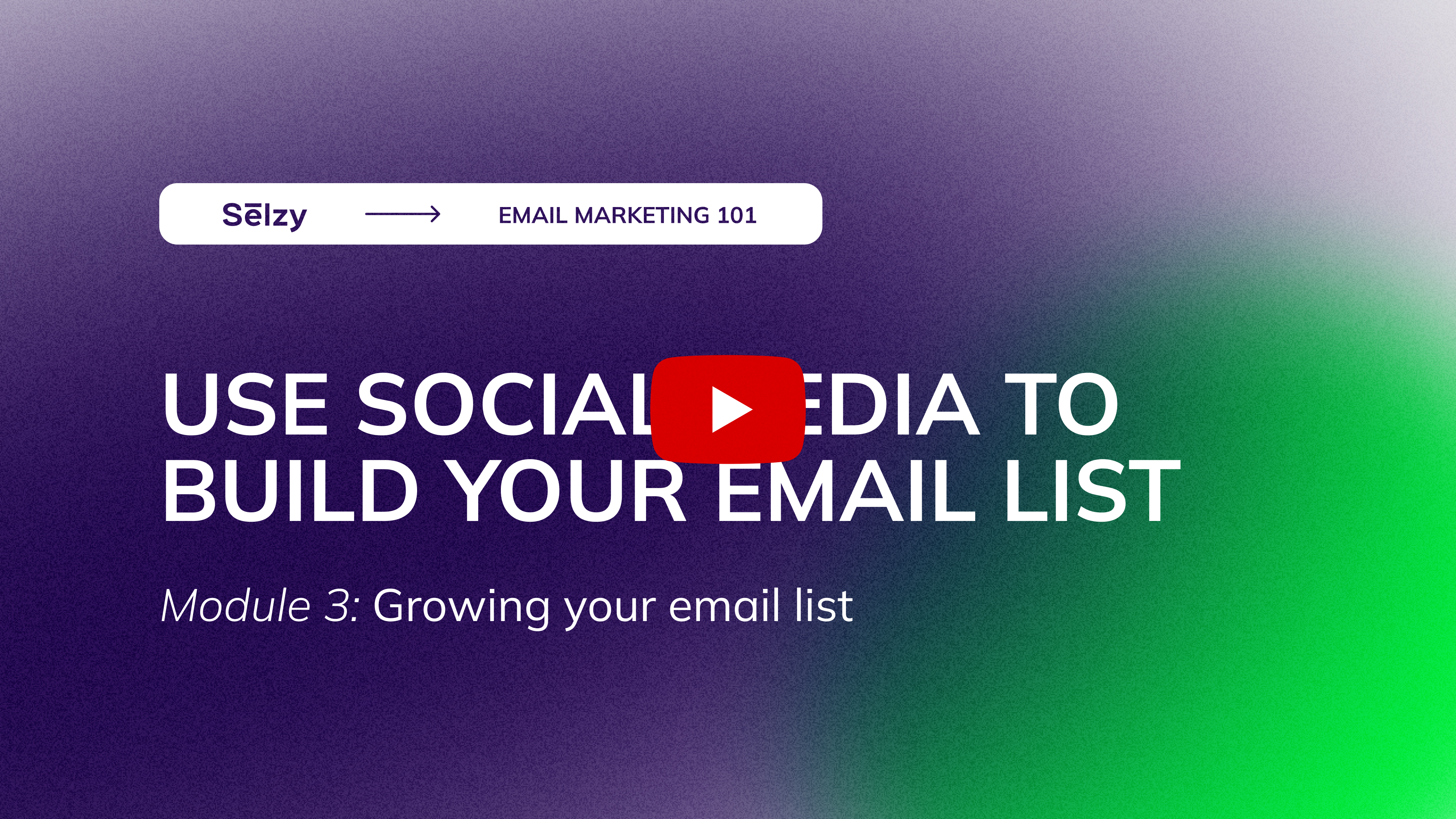Social Media and Other Channels as List Building Mechanism
This is a transcript of lesson 8 of Email Marketing 101 Course by Selzy.

A website isn’t the only way to beef your email list up. In this lesson, we’ll talk about social media and other channels as a list building mechanism.
Why would you need social media to get new subscribers? For these 3 reasons, at least:
- First, it’s one more channel other than a website so you’re not limited to a website only.
- Second, literally everyone is on social media. It’s too big to pretend it doesn’t exist.
- Third, both your prospects or loyal clients probably already follow you on Facebook or Instagram.
Arguably the best social media out there to snap up new email subscribers is Facebook. Not only because of its popularity but because it gives you great opportunities. Let’s count them.
There’s more to Facebook than just liking pages
Facebook allows you to create a sign-up button that leads users to a subscription page where they can leave their emails.

This visual is only available in a video lesson
You can combine a sign-up button with other Facebook options like “Follow” and “Like”. This allows your Facebook subscribers to follow your updates on social media and hear from you by email.

This visual is only available in a video lesson
Facebook’s closed groups are another opportunity for you
Since a closed group is not for everyone, it sounds like a bad idea to collect emails. However, what seems like a limitation is actually a big plus.
Here’s the thing — only approved members can join a group. This means that you get quality subscribers who make an extra step to get in touch with you. In addition, the group members share a common interest which boosts the engagement.
If you have a closed group, ask people to give their email in exchange for membership. You can make it a must or optional. Never forget to mention that by signing up, users give their consent to receive emails from you.

This visual is only available in a video lesson
Facebook boasts its advertising feature called LeadAds that allows you to collect emails
A Lead Ad is a kind of ads that people see when scrolling their Facebook feeds. Usually when you click on an ad, it tells you something or leads to an external website for no clear purpose. Not with LeadAds that have one stand-out feature — pre-filled forms. When users click on such an ad, they already have their Facebook data typed in, including the email.
Let’s move on to Instagram to see how you can capture emails there.
Instagram stories are great for lead generation
When you publish stories you can add a link to your subscription page. Interested users will proceed to that page and leave their emails. Bonus part: you’ll also be able to track how many viewers tapped the link.
On more basic level, Instagram bio is good place to capture emails
It’s only 150 characters long but that’s enough to cover bases and explain the “why” of signing up. The link to a subscription page can be shortened with online software.

This visual is only available in a video lesson
You can decide to be more proactive on Instagram and send automated messages to new followers
Someone starts to follow you and they immediately receive a message back. It can be a link to a subscription page straight away or a chatbot seeking to enquire more about the follower. The aim is to get the email.

This visual is only available in a video lesson
Pics and descriptions in bios — that’s not just Instagram but also Pinterest.
Use a Pinterest bio to show what you’ve got and a link to subscription. Attach a lead magnet to make the offer even more appealing.

This visual is only available in a video lesson
X (ex. Twitter)
To top it off, you can get email subscribers from X (Twitter).
Use the space under your bio to state that you have a newsletter that people can sign up to. Make the subscription visible on your account in a customized field and include a description.

This visual is only available in a video lesson
In addition, there are also X chats — public discussions based on a specific topic, usually a question in a hashtag. Participants can follow the discussion and participate if they wish and, somewhere during a discussion, there’s an opportunity for you to advertise your newsletter or attach a lead magnet.

This visual is only available in a video lesson
Other channels
You can also turn to alternative means of fetching subscribers, other than social media. For example, webinars.
Webinars are not only good for capturing emails but also to showcase products and hear the opinions of experts. You can get emails upon your webinar signup — and don’t forget to ask for consent.

This visual is only available in a video lesson
Finally, it’s worth mentioning the most traditional way out there — offline.
Email marketing didn’t start with the emergence of social media, it had long predated it. When people buy something at a physical store, they can leave emails in exchange for a coupon or a club member card. Or, for example, if you host an event, you can ask people to leave their emails if they wish to hear more about the product afterward.

This visual is only available in a video lesson
In the next lesson, we’ll talk about lead magnets — A.K.A. the incentives you can give to potential subscribers to get their consent to receive your emails, no matter how you choose to obtain their contacts.
Stay tuned!
This is a transcript of lesson 8 of Email Marketing 101 Course by Selzy.